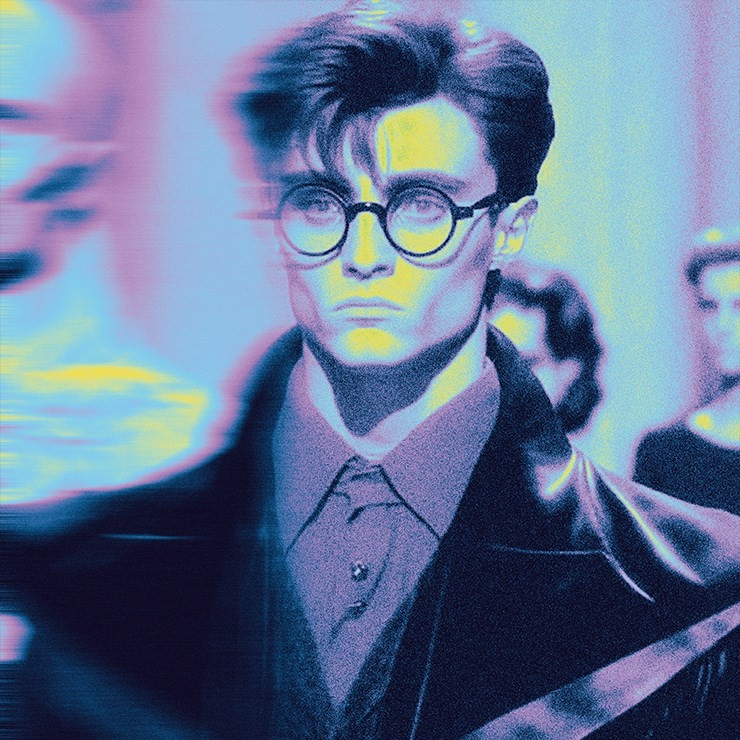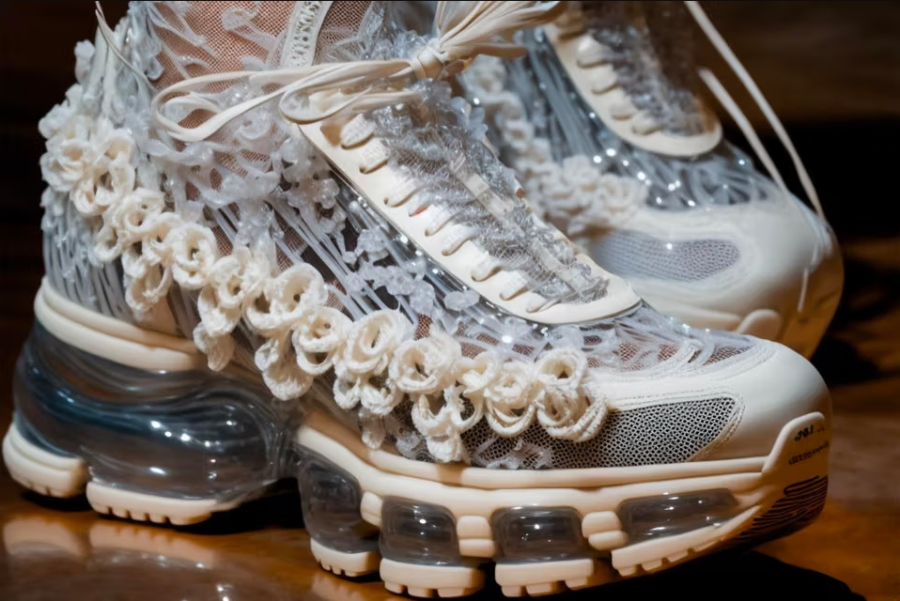According to McKinsey, the global market for artificial intelligence (AI) in the fashion sector was reported at $270 million in 2018 and is expected to grow to $4.4 billion by 2027.

Fictional character Harry Potter wears Balenciaga designs - works from AI technology
With the ability to realize drawings that would take humans a lot of time and effort to complete, artificial intelligence (AI) has become a “new wind” in the fashion industry. So how exactly has AI penetrated the fashion world? Can this technology replace the human element in the fashion industry?
AI has been in the news a lot lately as people have discovered the limitless possibilities of this technology. From Midjourney to Chat GPT, many applications that involve artificial intelligence are gradually taking over the market.
In the fashion industry, the exploration of AI applications has recently begun to grow at an exponential rate. According to McKinsey, the global market for AI in fashion was reported at $270 million in 2018 and is expected to grow to $4.4 billion by 2027.
With the ability to bring to life drawings that would take humans a lot of time and effort to complete, AI has become a “fresh breeze” in the fashion industry. So how exactly has AI penetrated the fashion world? Can this technology really replace the human element in the fashion industry?
AI takes fashion to the next level
According to FashionUnited, from clothing design, keeping up with trends or copyright protection, AI is ready to “reprogram” the fashion industry. Many studies show that AI will quickly replace 30% of the workload performed by fashion industry personnel in the future. By reducing the amount of time needed to perform many manual tasks, AI helps employees have time to focus on more important tasks.
For example, data site Heuritech is now offering an AI platform that analyzes millions of images to detect colors, cuts, shapes… to predict how trendy a design might be a year in advance.
While brands like Dior use Heuritech to validate their predictions about upcoming trends, manufacturers like Wolverine Worldwide use AI to assess whether consumer demand is increasing for specific products.
“With machine learning, there will be more sales or revenue predictions that will motivate the design team to be more creative,” said Brad Lacey, global design director at New Balance.
In terms of design, style, pattern and suitable color coordination are the key points to design an outfit that attracts customers. AI algorithms can also detect new trends according to demand, suitable for all genders and ages.

Featured is the fictional collaboration between Simone Rocha and Nike created by @ai_clothingdaily with impressive and highly feasible products.
After analyzing a designer's clothing dataset, AI uses that data to see which products are selling well and which are not, and creates or recommends for designers to launch completely new product models in the market, keeping up with customer tastes.
April 20 and 21 this year marked a milestone in the development of AI technology in fashion, when the first AI Fashion Week was held in New York City. Sponsored by Spring Studios and e-commerce retailer Revolve Group, the event showed that AI has become a tool of the future of fashion design.
What’s special is that participating designers don’t necessarily have to be in the fashion industry. The event creates a playground for tech enthusiasts and those with diverse aesthetic tastes to compete. More than 60% of attendees use the Midjourney platform to create their AI creations.
With all these advantages, it seems that AI technology is gaining immediate popularity in the fashion industry. However, when looking at the bigger picture, it is inevitable that there are concerns that come with this trend such as copyright, originality, and authenticity.
The Dark Side of AI Technology
With the advent of a variety of different models, AI has become a popular tool that anyone can access. According to CNN, as AI develops, unreal images are becoming more and more real, leading to concerns about ethics and the development of the fashion industry.
An image of Pope Francis recently went viral on social media, showing him wearing a long puffer jacket tied at the waist, a departure from his typical traditional attire. Millions were fooled by the photo before Pablo Xavier, a 31-year-old construction worker in Chicago, confessed to creating the photo using Midjourney.
In papal vestments, each garment carries religious significance. The colors are chosen to match the celebrations. Therefore, fake images of papal attire can cause offense, alarm, or even distrust in the Catholic community.
"I am convinced that the development of artificial intelligence has the potential to make a positive contribution to the future of humanity. I am certain that this potential will only be realized if there is a continuous and consistent commitment from those developing these technologies to act ethically and responsibly," Pope Francis said during a meeting at the Vatican on March 27, calling on scientists to consider its impact on humans.

Photo of 'Pope Francis wearing a life jacket' raises concerns about ethics in fashion
Can AI replace humans?
While the use of AI in fashion is slowly gaining traction, experts believe it still has its limitations, at least when applied on a large scale. As far back as 2018, American futurist Sophie Hackford warned of the dangers of AI in the fashion industry.
In addition to using artificial intelligence to counterfeit designs, the rise of AI could impact intellectual property rights, as the fashion industry uses AI to create fabric patterns, colors, and styles. With AI-driven algorithms, there is a risk that fashion will become less creative as it focuses on customer demand.
At the heart of our fears about AI—which is making fashion less unique—is a concern about the power shift between human intelligence and machines. We sense that robots are invading our lives and worry about how humans will compete with machines. The more AI moves into areas where humans are confident, like creativity and emotion, the more fearful we become.
Experts are therefore still in favour of new experiments. It is important not to overuse AI, lest it dominate the fashion industry. “While AI will probably never replace humans completely, we are excited about the potential it brings,” said Dr. Amy Gershkoff Bolles, global head of digital technology strategy at Levi Strauss.
According to Vietnam+